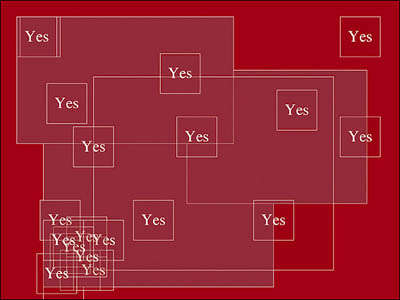 .
.
Christian Marclay’s awesome Video Quartet is on view now at LA’s Hammer Museum, as part of a mid-career retrospective of Marclay’s art-meets-music work. [In the LA Times, Chris Knight reviews the show–and misses some major points–with nary a mention of the video. the CS Monitor has a better review.]
I remember MoMA exhibiting his 1989 piece, Tape Fall, where an audio tape of running water pools onto the floor. It was cool, but Video Quartet blew me away. Marclay brings his sampling and mixing experience from DJ’ing to his artmaking, “plumbing the deeper meanings of that intersection.”

Of course, I found out about it
one day too late, but it turns out the selling of Marclay’s 1995 work,
Telephones, perfectly encapsulates the challenges video poses to artists and dealers.
According to a curator/dealer I’ve known for years,
Telephones was sold in two editions: a small, signed edition of 25, and a larger, unsigned edition of, say, 100. They were priced at $1,000 and $200, respectively. [While not Jayson Blairing these numbers, I should say I don’t remember them exactly. They’re directionally accurate, though.]
But several people who bought the unsigned edition apparently felt no compunction in copying it for friends. Without the signature, these dubs were essentially identical to the unsigned tapes. The result [with no offense to the Fab Five]: it queered the market for the larger edition.
Infinite reproduction is, theoretically, at least, inherent in video-based art. But in Marclay’s case, the talismanic, even fetishistic, signature was enough to make
some buyers think twice before dubbing. But it’s a little finger-in-the-dike, though, as the unsigned, now-unlimited edition proves. I’ll give Marclay a call about this some time.








